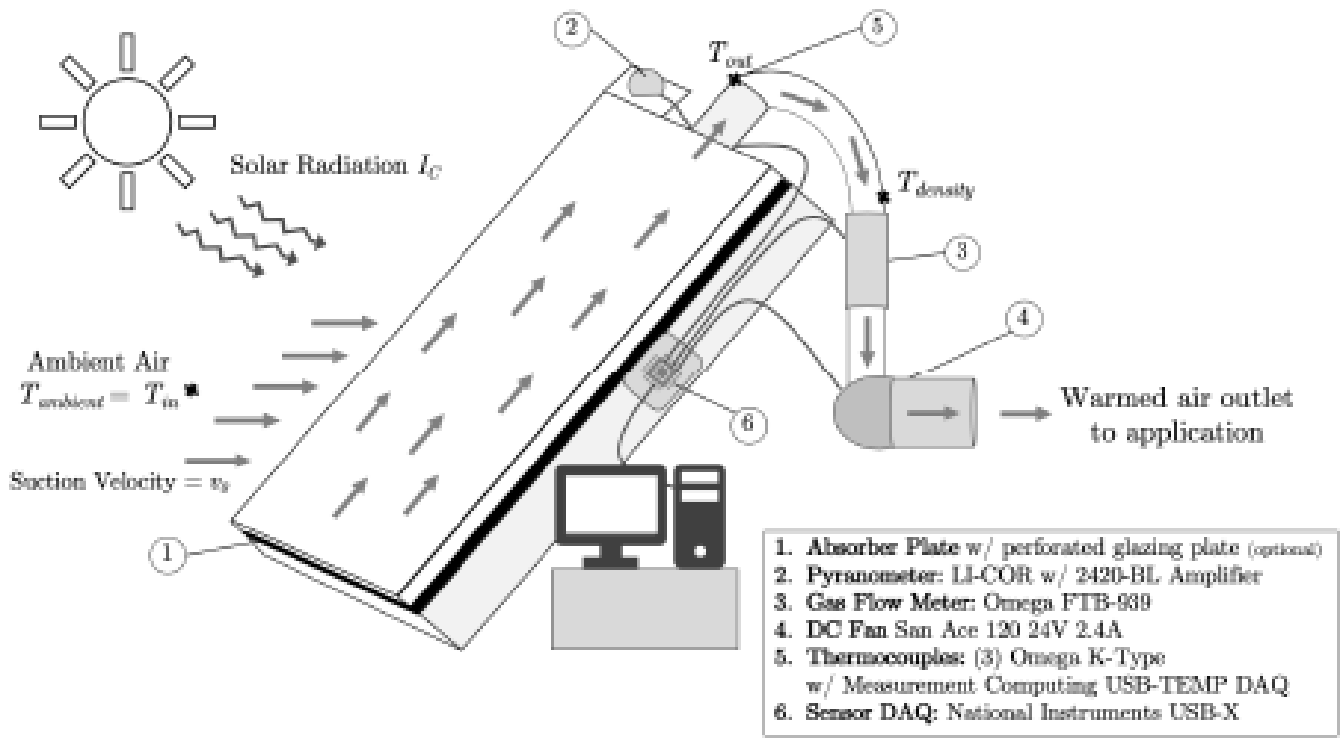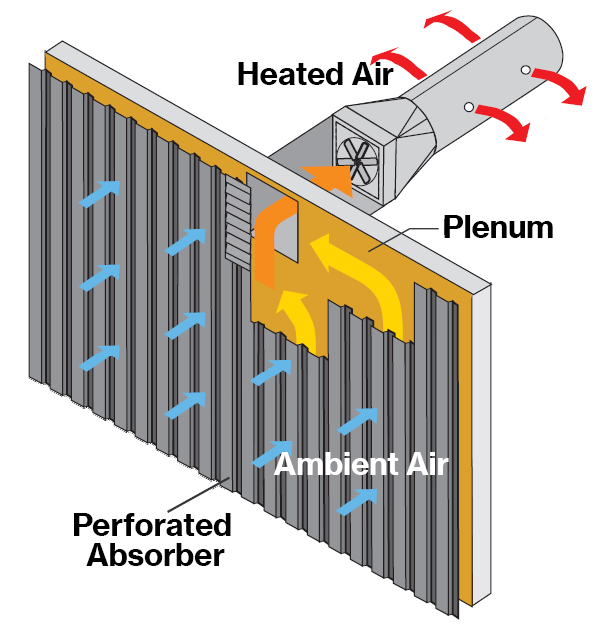Research Brief: Alternative Energy/Sustainable System Design
Project Brief
Type of Research: Alternative Energy/Sustainable System Design
Motivation for Research: The Transpired Solar Collector (TSC) is a promising solar thermal technology that converts solar energy into heat energy that can be used for a range of low temperature applications. In general, a TSC consists of a flat plate absorber panel comprised of a dark perforated material. The collector is oriented such that the sun is directed at the surface of the absorber. The collector absorbs the incident solar radiation and transfers the heat to the air that is pulled through the collector plate using a fan or a blower. The ambient air is heated as it passes through the absorber plate into the plenum, or collection space, behind the absorber plate. TSCs represent a high efficiency means of generating warm air for applications ranging from building heating to crop drying. The work conducted here evaluates the effectiveness of several TSC design features in order to make the devices less expensive, easier to construct, and more suitable for use in developing environments.
Research Approach
Several key design parameters that would drive the efficiency and cost of a TSC were extracted from the available literature. These factors included hole pitch, absorber material, perforated glazing material, solar flux, and suction velocity. A test stand was developed to systematically manipulate the experimental factors and characterize the performance of thin-film plastic transpired collectors under the various operating configurations. Unlike many experiments reported in the literature, these experiments were performed under actual outside conditions where changes in wind speed, cloud coverage, and realistic radiative and convective heat losses could affect performance.
Key Findings

- There is a significant improvement in terms of useful heat gain (up to 29% under conditions examined here) when utilizing a glazing layer.
- For low suction velocities (less than 0.020 m/s), the useful energy generated from the TSC was not affected by the glazing material (standard greenhouse film vs. infrared greenhouse film).
- At high suction velocities (greater than 0.020 m/s), the measured useful heat gain for the standard glazing is continuously higher than the IR glazing.
- At higher insolation levels (1000 watt/m2) the measured useful energy for the HDPE collector was about 10 percent higher than the PP material.



